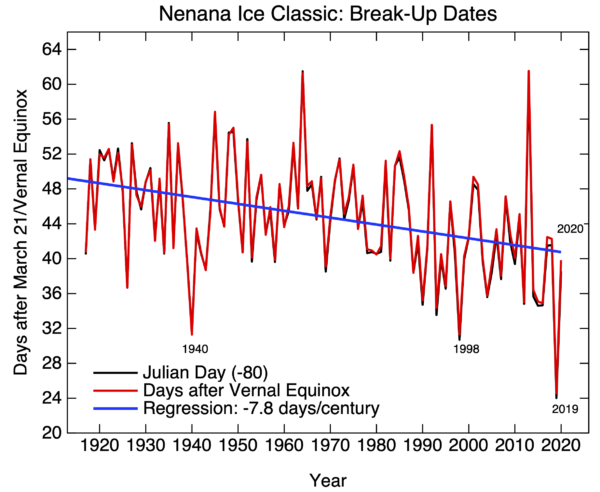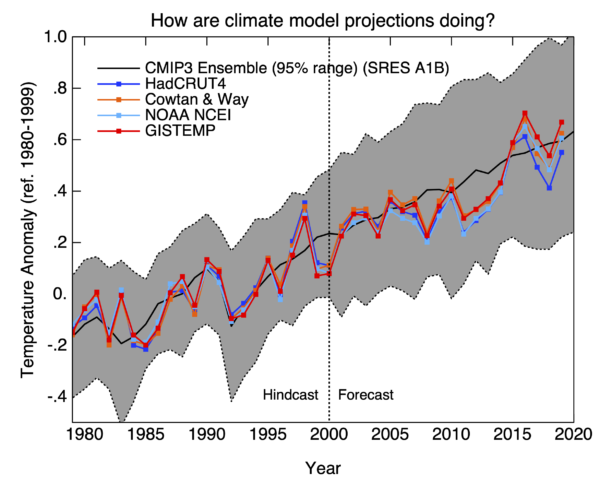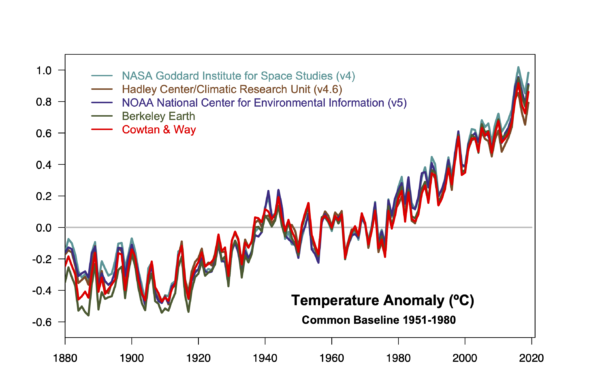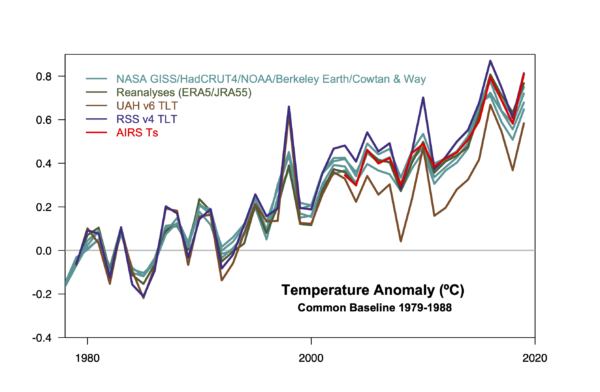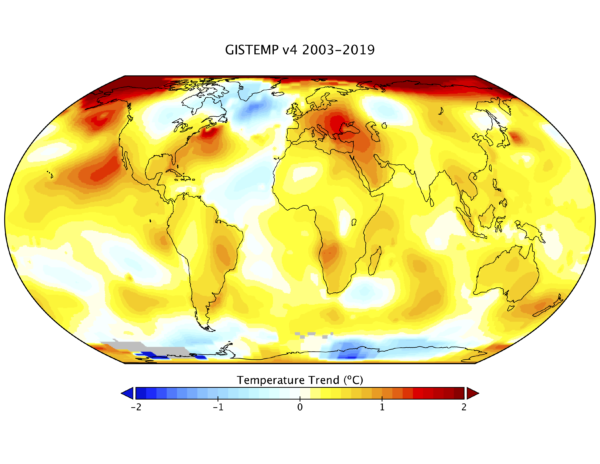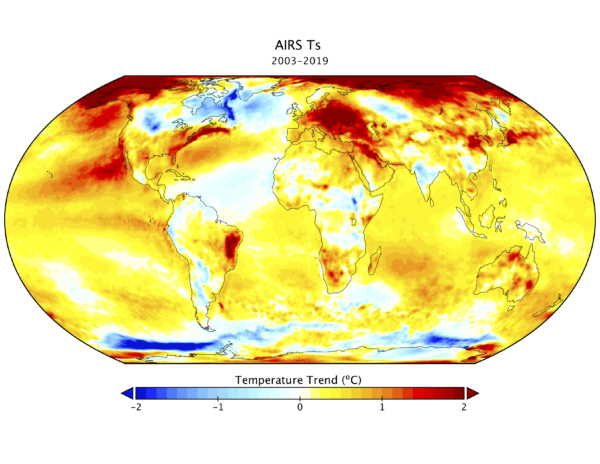Not small enough to ignore, nor big enough to despair.
There is a new review paper on climate sensitivity published today (Sherwood et al., 2020 (preprint) that is the most thorough and coherent picture of what we can infer about the sensitivity of climate to increasing CO2. The paper is exhaustive (and exhausting – coming in at 166 preprint pages!) and concludes that equilibrium climate sensitivity is likely between 2.3 and 4.5 K, and very likely to be between 2.0 and 5.7 K.
[Read more…] about Climate Sensitivity: A new assessmentReferences
- S.C. Sherwood, M.J. Webb, J.D. Annan, K.C. Armour, P.M. Forster, J.C. Hargreaves, G. Hegerl, S.A. Klein, K.D. Marvel, E.J. Rohling, M. Watanabe, T. Andrews, P. Braconnot, C.S. Bretherton, G.L. Foster, Z. Hausfather, A.S. von der Heydt, R. Knutti, T. Mauritsen, J.R. Norris, C. Proistosescu, M. Rugenstein, G.A. Schmidt, K.B. Tokarska, and M.D. Zelinka, "An Assessment of Earth's Climate Sensitivity Using Multiple Lines of Evidence", Reviews of Geophysics, vol. 58, 2020. http://dx.doi.org/10.1029/2019RG000678
